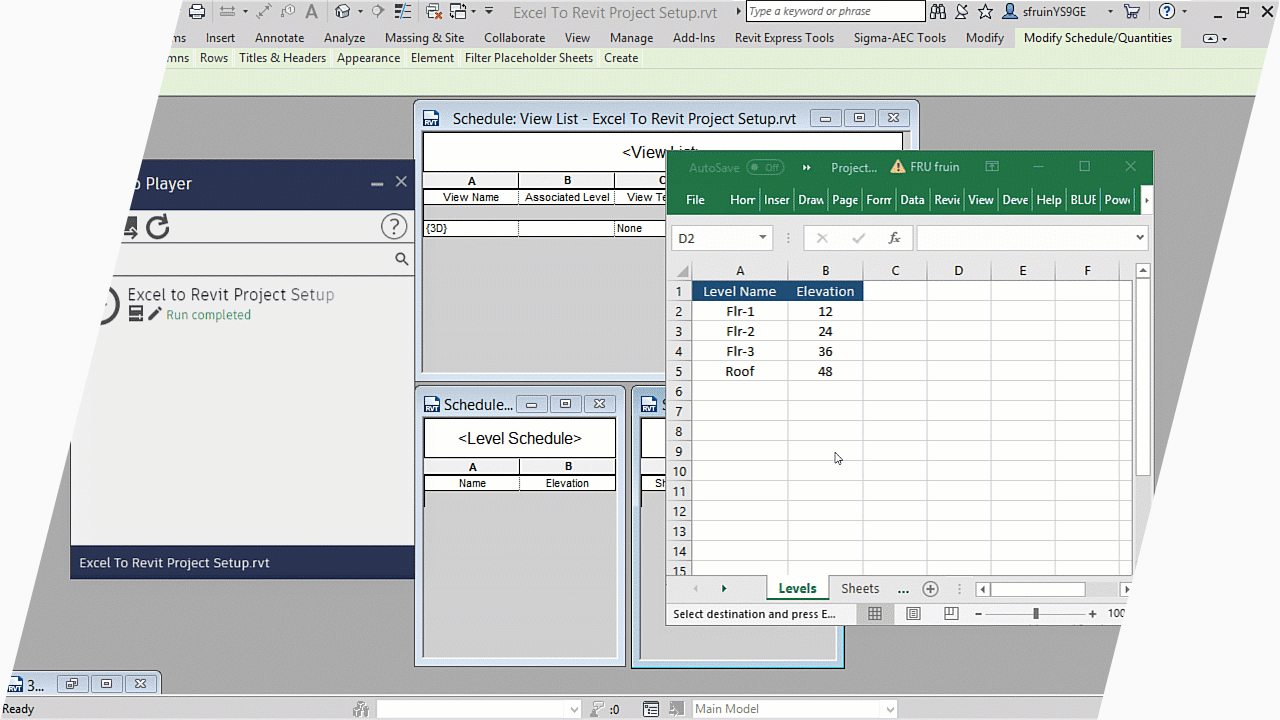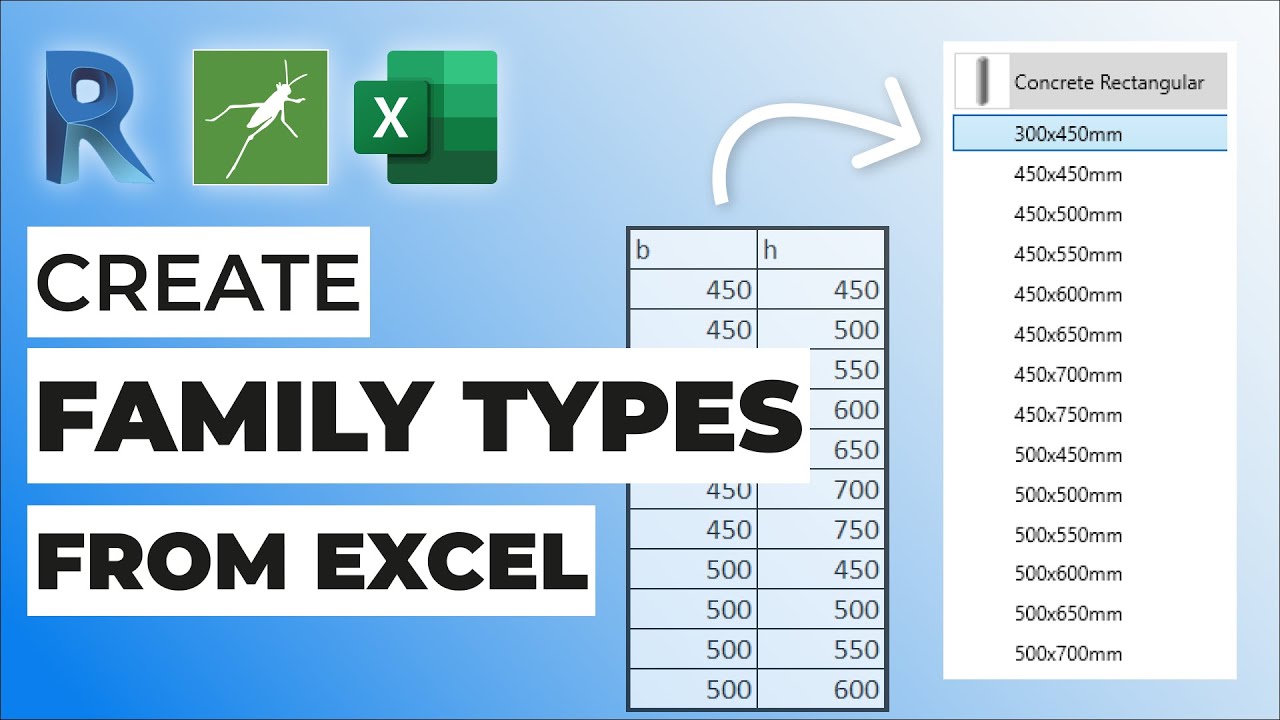Revit Add Ins: Supercharge Your Design and Modeling
Wiki Article
Grasping the Art of Information Combination: Exactly How to Seamlessly Import Excel Data Into Revit
Are you struggling to import Excel files into Revit efficiently? Look no additional! In this post, we will certainly assist you via the process of grasping the art of information integration. Discover the value of seamless assimilation in Revit and discover the Excel file format for Revit assimilation. Prepare yourself to prepare your Excel data effortlessly and follow our detailed guide to import documents right into Revit. With our finest techniques, you'll attain data assimilation success in a snap. Allow's get begun!Recognizing the Relevance of Information Integration in Revit
Comprehending the importance of data combination in Revit is vital for smooth importing of Excel data. It enables you to effectively manage and update info throughout the whole job when you integrate information from Excel into Revit. This combination ensures that your design and building and construction process is current and accurate.By incorporating data, you can quickly import and upgrade criteria, schedules, and also geometry in Revit. This eliminates the need for hands-on data access, saving you time and decreasing the danger of mistakes. With Revit's information assimilation capacities, you can maintain uniformity and accuracy in your project, while likewise enhancing partnership amongst employee.

Discovering the Excel Documents Format for Revit Assimilation

In order to successfully integrate Excel documents right into Revit, it is crucial to make sure that the information is formatted appropriately. This consists of appropriately labeling rows and columns, in addition to structuring the data in a manner that is suitable with Revit's information schema. Revit makes use of particular specifications and groups to arrange information, so it is necessary to line up the Excel information with these parameters to ensure a smooth assimilation.
Furthermore, it is necessary to note that Revit only supports particular data types when importing from Excel. These include message, numbers, and days. Any kind of various other data kinds, such as formulas or conditional format, will not be identified by Revit and may create concerns during the combination procedure.
Preparing Your Excel Information for Seamless Import Into Revit
To make certain a smooth combination procedure, you'll require to appropriately layout and tag the columns and rows in your Excel data prior to importing it right into Revit. Because it allows Revit to accurately analyze and arrange your data, this action is important. Begin by examining your Excel information and identifying which rows and columns consist of appropriate info for your Revit project. Then, make certain to label each column with a detailed and clear header. This will certainly aid you and others easily understand the function of each column and stay clear of complication throughout the import procedure.Following, make sure that the information in each column is effectively formatted. If you have a column revit tools for dimensions, make sure that all measurements are constantly formatted in the same systems of measurement. Revit counts on constant formatting to precisely analyze and import information.
In addition, it is necessary to look for any kind of empty cells or variances in your information. Revit might not have the ability to review or import data from cells that are vacant or have errors. It is recommended to review your Excel data and cleanse up any incongruities before importing it into Revit.
Step-By-Step Overview to Importing Excel Files Into Revit
Once you have actually appropriately formatted and labeled your Excel information, you can quickly import it right into Revit by following this detailed overview. To begin, open Revit and browse to the "Insert" tab. Click on "Import CAD" and choose "Import Excel" from the dropdown food selection. A brand-new window will certainly appear, asking you to find the Excel data you intend to import. Browse your computer system and pick the Excel data, after that click "Open."Following, a dialog box will certainly appear, permitting you to customize the import setups. Below, you can choose the worksheet you intend to import, define the variety of cells to import, and pick the appropriate devices for your data. When you've made your selections, click "OK" to proceed.
Revit will currently display a sneak peek of your Excel data. Take a moment to assess the sneak peek and make certain that everything looks correct. If required, you can make changes to the import setups by clicking on the "Setups" button.
Ideal Practices for Information Assimilation Success in Revit
Make certain you comply with these ideal practices to guarantee successful combination of information in Revit. It is critical to organize your data in Excel before importing it into Revit. This means making certain consistent calling conventions, correct format, and accurate data depiction. Next off, use Revit's integrated devices for information mapping. This will permit you to match the columns in your Excel data with the corresponding parameters in Revit. Bear in mind the information and units types when mapping the data, as any discrepancies can lead to mistakes in the integration process.Another essential practice is to regularly validate and upgrade your information. As your project progresses, it is crucial to maintain your Excel data as much as date with any type of modifications made in Revit. This will certainly aid maintain the precision and consistency of your data throughout both systems. In addition, make use of information recognition devices within Revit to recognize any kind of mistakes or incongruities in the incorporated data.
Finally, it is suggested to develop a clear operations for data combination. This consists of defining roles and obligations, establishing up an interaction channel in between group participants, and developing a normal cadence for data updates and reviews. By complying with these best techniques, you can ensure a smooth and successful integration of information in Revit, eventually improving the efficiency and precision of your task.
Verdict
In conclusion, grasping the art of data assimilation is essential for smooth import of Excel submits right into Revit. Comprehending the relevance of data assimilation in Revit is the initial action in the direction of successful combination.When importing data from Excel right into Revit, it is essential to comprehend the documents style and exactly how it can influence the assimilation process (import excel into revit). Revit uses specific criteria and classifications to organize information, so it is essential to straighten the Excel information with these criteria to make certain a seamless combination
Be mindful of the units and data kinds when mapping the information, as any type of disparities can lead to mistakes in the combination procedure.
Additionally, make usage of information validation tools within Revit to determine any type of mistakes or incongruities in the incorporated information.

Report this wiki page